Winterize your car and be ready for winter
Get your car ready for winter—Winterize your car
There are several things you can do yourself to get your winterize your car and get your car ready for winter and most don’t cost very much. The checklist items below can save you from damaging your engine, getting stranded, getting frozen out of your car and getting into expensive slip and slide accidents. Let’s start with winterizing your car.
How to winterize your car
Engine coolant is the modern term for antifreeze. Engine coolant prevents freezing that can destroy your engine, but it does more than that. Engine coolant also contains anti-corrosion additives to prevent internal system corrosion that can eat away at your radiator, heater core, water pump and steel heater lines. So it’s critical that you check the level of freeze protection of your engine coolant as well as it’s pH balance and anti-electrolysis properties.
Check engine coolant for freeze protection
Buy an engine coolant tester at any auto parts store. The tester must be rated for the type of coolant in your engine. They’re not all that same. Squeeze the 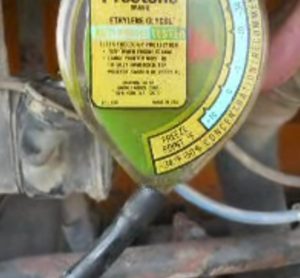 rubber bulb and suck in some engine coolant. Then read the freeze protection level on the chart. If the engine coolant tests to the temperatures you’ll encounter in your area, move on to the next test.
rubber bulb and suck in some engine coolant. Then read the freeze protection level on the chart. If the engine coolant tests to the temperatures you’ll encounter in your area, move on to the next test.
Check engine coolant for pH balance
Buy engine coolant test strips at any auto parts store. Simply dip the strip into the coolant reservoir, wait the 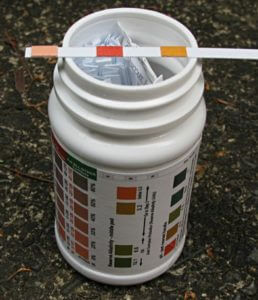 recommended time and compare the color to the chart. If it passes the test, move on to the electrolysis test.
recommended time and compare the color to the chart. If it passes the test, move on to the electrolysis test.
Check your coolant’s anti-corrosion protection using a digital multi-meter
Set your digital multi-meter to read 12 volts DC. Connect one meter lead to the negative battery terminal. 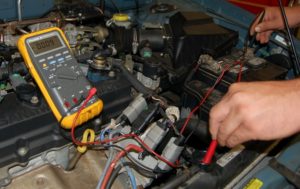 Submerse the other end into the coolant. Start the engine and rev it to 2,000 RPM and read the voltage on the meter.
Submerse the other end into the coolant. Start the engine and rev it to 2,000 RPM and read the voltage on the meter.
Any reading over .3-.4 volts indicates that the coolant is conducting too much electricity. Replace the coolant right away to avoid internal cooling system corrosion.
Use the right motor oil for winter
Cold temperatures cause oil to thicken and make it harder to pump 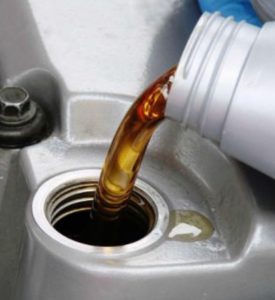 and start your car. Using the wrong viscosity for winter temperatures can cause your engine to struggle to start and drain your battery quickly.
and start your car. Using the wrong viscosity for winter temperatures can cause your engine to struggle to start and drain your battery quickly.
Oil recommendations are in your owner’s manual. Don’t substitute your own preferences for the car maker’s. If the car maker recommends synthetic oil, it’s because they feel it’ll provide the best starting and gas mileage and the lowest engine wear. Using the proper motor oil viscosity is critical to get your car ready for winter
Clean the battery terminals and posts
You put the greatest demands on your car’s charging system and battery during the winter months when you run your headlights longer, run the defogger, heated seats and blower motor.
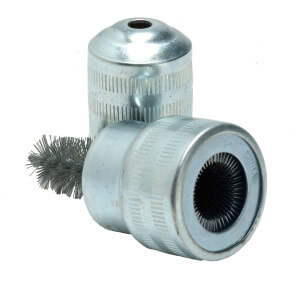
Remove the battery cable terminals and clean the inside of the terminal and the battery post with a battery cleaning brush
Corrosion on the battery terminals produces high resistance, causing the alternator to work harder, and that can cause it to work harder and fail early.
If your car has an electronic throttle body or memory accessories like memory seat, memory sunroof, etc, it’s best to provide battery backup to the computer before disconnecting the battery terminals. Some cars require a factory scan tool to reprogram and relearn throttle body closed position.
Remove the negative battery terminal first, then the positive terminal. Use a battery cleaning tool or wire brush to clean the terminals and battery posts.
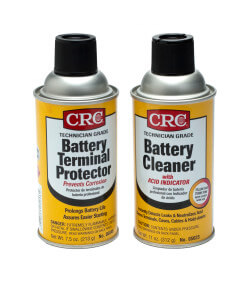
Neutralize battery corrosion and protect against future corrosion with these product. Find them at any auto parts store.
If you have corrosion buildup, spray the posts, terminals, and battery top with a battery cleaning spray that neutralizes battery acid. Then wipe off the cleaner. Reinstall the positive terminal first, then the negative terminal. Spray a battery protectant spray on the terminals to reduce further corrosion.
Test car battery before winter
Car batteries have a limited life, usually less than five years. But you can test the condition of your battery with a battery tester or take it to an auto parts store and have them test it for you. Don’t rely on just a simple voltage test—that’s not enough to judge the battery’s overall condition.
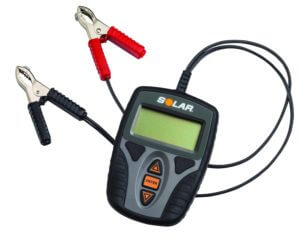 Modern battery testers perform a conductance, resistance and simulated load test that can accurately predict your battery’s condition. If yours is on the edge, replace it now, because it will fail when the temps fall.
Modern battery testers perform a conductance, resistance and simulated load test that can accurately predict your battery’s condition. If yours is on the edge, replace it now, because it will fail when the temps fall.
Replace your wiper blade before winter
Winter wiper blades don’t plug up with ice and snow like regular wiper blades, so you get much better wiper performance without 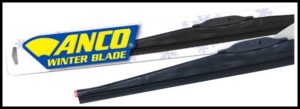 streaks. Winter wiper blades cost about $13 each and are available at any auto parts store. They’re well worth the money.
streaks. Winter wiper blades cost about $13 each and are available at any auto parts store. They’re well worth the money.
Check your tire tread depth
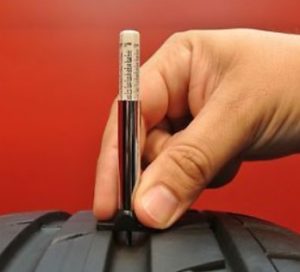 Forget about using a penny to check tread depth. Low tread depth can be fatal in winter conditions because the tread can’t grip the road. A single slide into a curb can easily cause over $1,500 in damage. Sure, you can file an insurance claim, but you’ll still have to pay the deductible and increased rates for several years.
Forget about using a penny to check tread depth. Low tread depth can be fatal in winter conditions because the tread can’t grip the road. A single slide into a curb can easily cause over $1,500 in damage. Sure, you can file an insurance claim, but you’ll still have to pay the deductible and increased rates for several years.
Buy winter tires
 For about the same price as your deductible, you can buy winter tires that can help you avoid those kinds of accidents in the first place. In fact, winter tires accelerate better and stop faster than even new all-season tires. Independent prove that winter tires stop you 66% faster (an amazing 30-ft shorter) than the same vehicle equipped with all season tires. The tests were done by accelerating to 30MPH and slamming on the brakes (vehicle equipped with ABS). Here’s why they stop faster:
For about the same price as your deductible, you can buy winter tires that can help you avoid those kinds of accidents in the first place. In fact, winter tires accelerate better and stop faster than even new all-season tires. Independent prove that winter tires stop you 66% faster (an amazing 30-ft shorter) than the same vehicle equipped with all season tires. The tests were done by accelerating to 30MPH and slamming on the brakes (vehicle equipped with ABS). Here’s why they stop faster:
Snow-on-snow grips better than rubber-on-snow. You may think the aggressive tread on snow tires is designed grip the snow and then throw it out of the tread voids. That’s wrong. Winter tires are designed to pack the snow into the tread voids and keep it there, because squeezing snow against snow provides more grip. Think of how well snow packs together when making a snowball!
Winter tires stop faster on ice too
The same tests shows that winter tires help you stop 44% faster (18-ft) 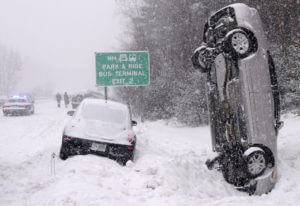 on ice too. That’s due to the tire’s sipping and rubber compound that literally squeegees water off the ice.
on ice too. That’s due to the tire’s sipping and rubber compound that literally squeegees water off the ice.
Check tire pressure often
Tire pressure fluctuates with outside temperature. If you check tire pressure at 40° it will be lower than the recommended pressure when temps drop to 0°. Driving on low tire pressure wears out your tires prematurely and increases stopping distance because you have less tread in contact with the road.
Examine your engine’s belts and hoses
As I mentioned earlier, winter weather puts a big strain your starting and charging system and it’s all run by the alternator which relies on the serpentine belt. A worn belt can cause the alternator to produce too little power. Older style serpentine belts were made from nitrile that cracked as it aged, so you could see when they needed replacement. But the newer belts are made from EPDM and they don’t crack as they wear. See this post to learn how to check for belt wear.
https://ricksfreeautorepairadvice.com/understanding-serpentine-belt-drive-systems/
Lubricate your lock cylinders
I know you use your remote keyless entry to unlock your doors. But 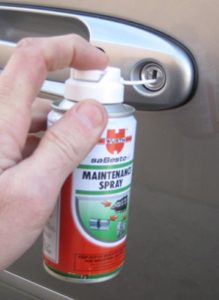 one of these days that’s going to fail. If you haven’t lubricated the door and truck lock cylinders, you may find that your keys don’t work. Lubricate door locks with graphite, silicone or dry Teflon lube spray. Do NOT use an all purpose lubricant like WD-40. The oil in those products attract dust and dirt and gum up the lock cylinder.
one of these days that’s going to fail. If you haven’t lubricated the door and truck lock cylinders, you may find that your keys don’t work. Lubricate door locks with graphite, silicone or dry Teflon lube spray. Do NOT use an all purpose lubricant like WD-40. The oil in those products attract dust and dirt and gum up the lock cylinder.
Prevent door freeze up with spray lubricant
New cars don’t have rain gutters so the water rolls off the roof and right into the opening at the top of your door. When it freezes, it bonds the ![]() weather stripping to the door frame, preventing you from opening the door. To avoid that problem, spray silicone or dry Teflon lubricant on a rag and wipe it on the weather stripping and door frame. That way, the water won’t stick when it freezes.
weather stripping to the door frame, preventing you from opening the door. To avoid that problem, spray silicone or dry Teflon lubricant on a rag and wipe it on the weather stripping and door frame. That way, the water won’t stick when it freezes.
Lubricate window channels
Snow and ice can also cause problems with your windows. If your window freezes in the track and you 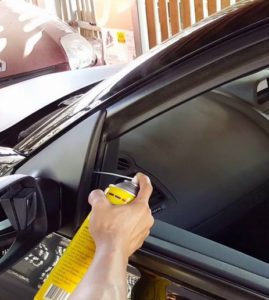 try to open it, the cable operated mechanism can break, costing you hundreds of dollars. Prevent that freezing by spraying the window tracks with silicone spray or dry Teflon lube.
try to open it, the cable operated mechanism can break, costing you hundreds of dollars. Prevent that freezing by spraying the window tracks with silicone spray or dry Teflon lube.
Pack an emergency kit
Be prepared for winter emergencies by packing an emergency kit. Aside from some basic tools, always pack these items: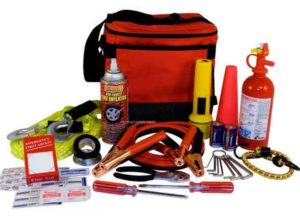
• a hat and warm gloves—there’s nothing worse than trying to change a flat tire in freezing conditions with your bare hands.
• Can of flat repair and plug in tire inflation pump
• Candle and matches (to keep warm inside if you’re stuck),
• Warning flares or flashing warning light
• Rags and hand cleaner
• Energy bars
• Plug in (power port) light with long cable to do repairs or change tire
• Cheap rain poncho or large garbage bag.
• Blanket
• Hand warmers
© 2016, Rick Muscoplat
Posted on by Rick Muscoplat